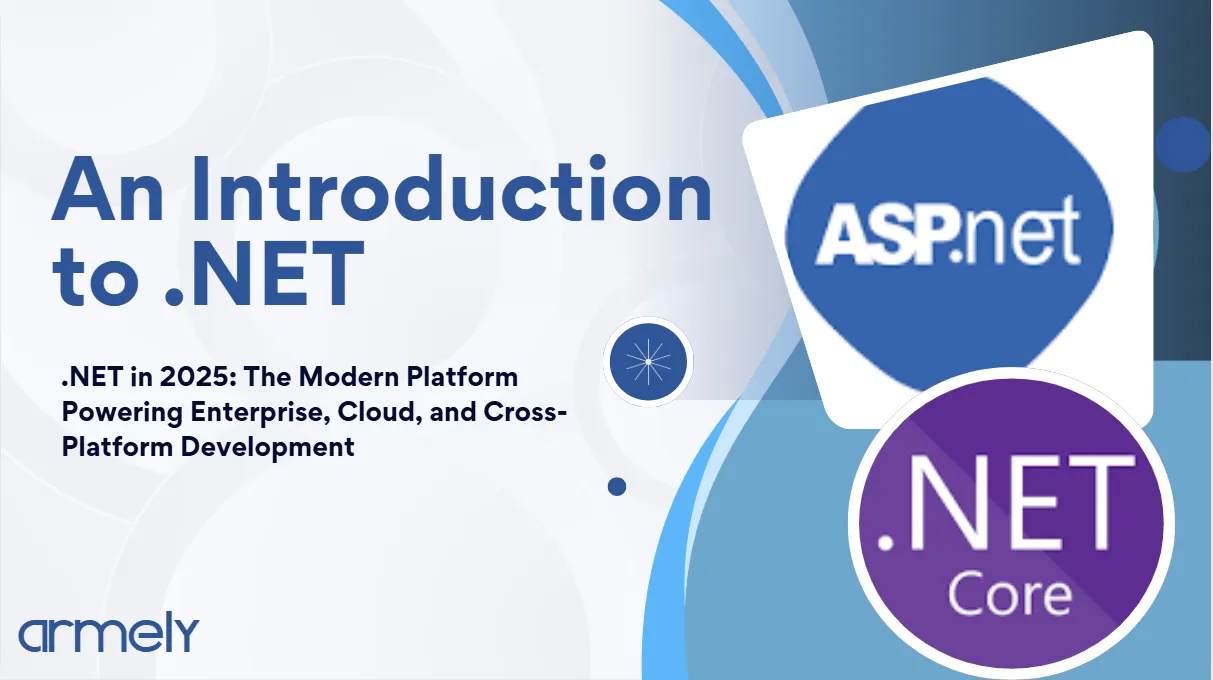
How we are Revolutionizing Invoice Processing for our customers using Process Mining and AI Agents
- October 28th, 2025
- 269 Views
Mela AI is available 24/7.

 Need help?
Need help? 
An Introduction to .NET
Why .NET Still Matters Today
When you think about the software powering enterprises, scaling global cloud solutions, and running on everything from web browsers to mobile devices, chances are .NET is part of the story. For over two decades, Microsoft’s .NET ecosystem has been a backbone of enterprise development, but the modern .NET platform is far more than the legacy “.NET Framework” many still associate with Windows desktops.
Today, .NET is open-source, cross-platform, cloud-optimized, and evolving rapidly to meet the demands of modern developers. Whether you’re a student exploring backend development, a junior-to-mid-level developer expanding your toolkit, or a technical manager evaluating technology stacks, understanding what .NET is (and what it has become) is key.
In this article, we’ll break down what .NET is, its core components, why developers and organizations rely on it, and where it’s headed in the future.
Section 1: Understanding the .NET Platform
To appreciate the modern .NET, it helps to understand where it came from.
From .NET Framework to .NET Core to .NET 5+
The original .NET Framework, released in 2002, was designed primarily for Windows applications. While powerful, it was closed-source, Windows-only, and increasingly mismatched with the world of Linux servers, mobile apps, and containerized deployments.
Microsoft responded by introducing .NET Core in 2016, a lightweight, modular, open-source, and cross-platform reimagining of .NET. Developers could now run their applications on Windows, Linux, and macOS with much better performance.
By 2020, Microsoft unified these branches into a single product line simply called .NET (starting with .NET 5). This unified platform eliminated fragmentation and gave developers a single, modern foundation to build on, one that continues to evolve annually with new releases (.NET 8 is the current Long-Term Support version, with .NET 9 on the horizon).
Key Characteristics of the Modern .NET
The result is a unified, future-proof development platform that spans multiple application types.
Section 2: Key Components and Workloads (What You Can Build with .NET)
One of .NET’s greatest strengths is its versatility. Rather than being tied to a single type of application, .NET enables development across web, cloud, desktop, mobile, and beyond.
ASP.NET Core: Modern Web & API Development
ASP.NET Core is the go-to framework within .NET for building:
Thanks to its high performance and cross-platform nature, ASP.NET Core is widely used in enterprise-scale web apps, SaaS products, and microservice architectures.
Cloud and Azure Integration
While .NET runs anywhere, it shines particularly bright in the cloud, especially with Microsoft Azure.
For organizations investing in cloud-native development, .NET + Azure is a compelling, productivity-focused combination.
Desktop and Mobile Development
Although web and cloud dominate the conversation, .NET also supports desktop and mobile:
This breadth makes .NET unique: few platforms allow you to target so many workloads with a consistent development experience.
Section 3: Why Choose .NET?
So why do developers and organizations continue to choose .NET in 2025? The answer lies in a combination of technical performance, ecosystem maturity, and developer productivity.
1. Performance
Performance has been a major focus of the modern .NET runtime, and it shows. ASP.NET Core regularly ranks among the fastest web frameworks in independent benchmarks. For organizations, this means:
2. Community and Ecosystem
.NET benefits from the backing of Microsoft while thriving as an open-source ecosystem. Key highlights include:
This combination ensures that developers are never alone, solutions and libraries exist for nearly every common need.
3. Enterprise Reliability
For businesses, .NET offers stability and long-term viability:
4. Developer Productivity
Productivity is where .NET often wins hearts:
Together, these tools help developers spend less time fighting configuration and more time delivering features.
Conclusion & Next Steps
The modern .NET is no longer just a Windows-only framework from the early 2000s. It’s a high-performance, open-source, cross-platform ecosystem that powers everything from enterprise-scale APIs to cloud-native solutions and cross-platform apps.
For developers, it provides a single, unified foundation to grow your skills across multiple application types. For organizations, it offers performance, security, and a trusted long-term investment. And with Microsoft’s continued investment, .NET’s role in cloud, AI, and modern app development will only expand.
Ready to dive deeper?
Here are some excellent starting points to continue your .NET journey:
Here at Armely, we understand the power of .NET in building scalable, secure, and high-performance applications. Our team specializes in API development with .NET, helping organizations design and deliver solutions that integrate seamlessly with modern cloud, web, and enterprise environments.
👉 Whether you’re just starting with .NET or looking to optimize your existing systems, we’re here to support your journey. Contact Us to learn how we can help you accelerate your next project with .NET.